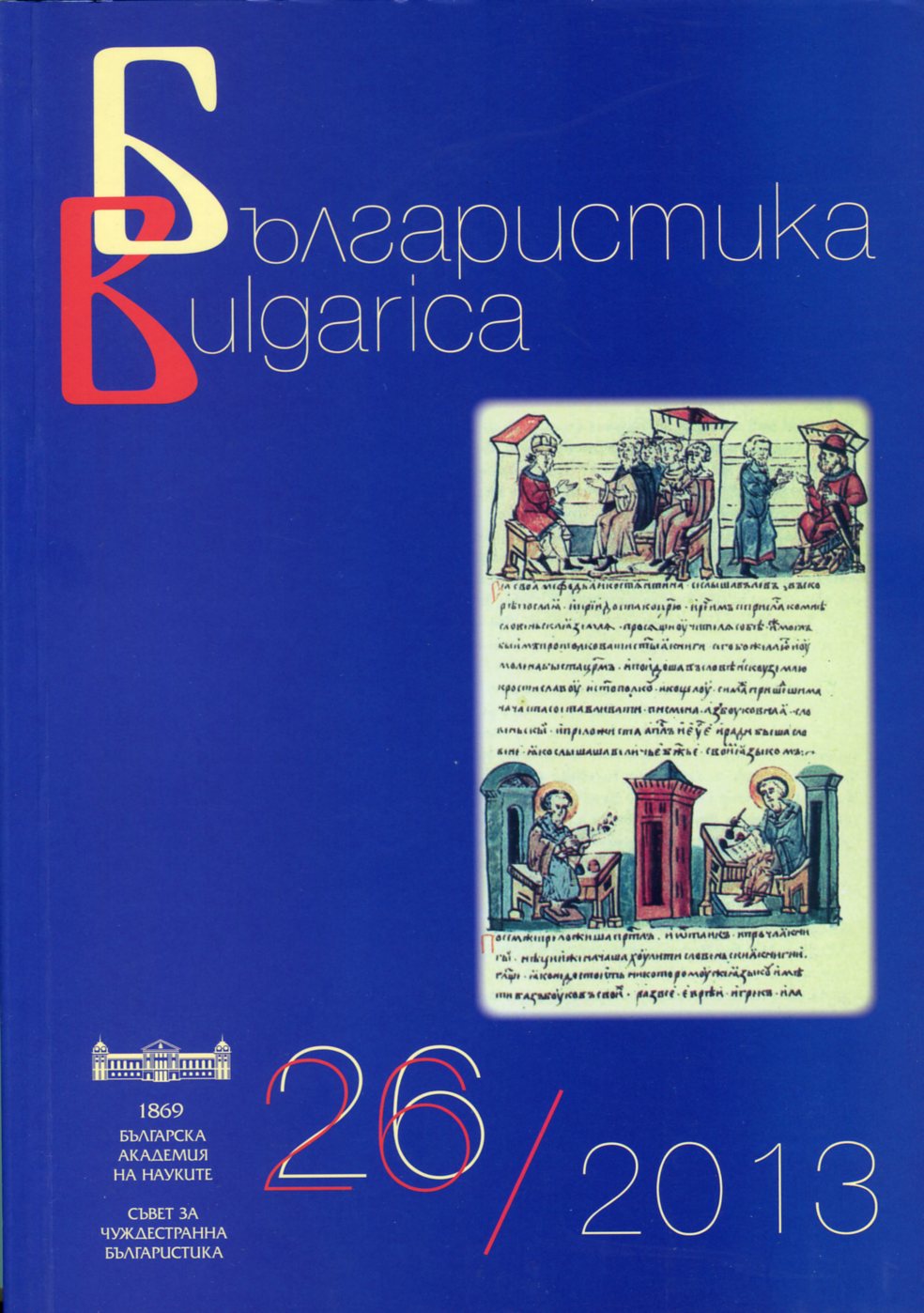
We kindly inform you that, as long as the subject affiliation of our 300.000+ articles is in progress, you might get unsufficient or no results on your third level or second level search. In this case, please broaden your search criteria.


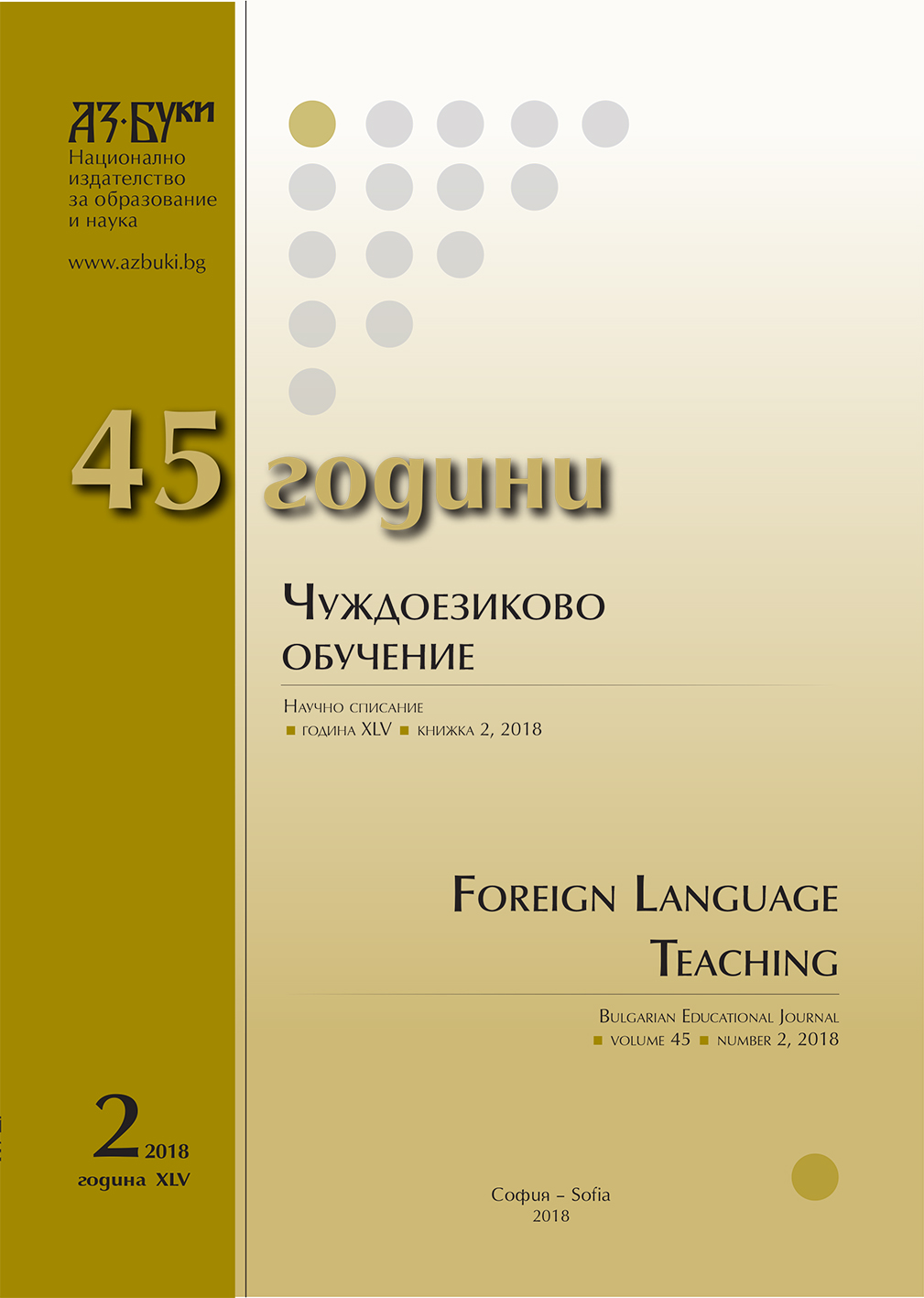

This article presents variants for organizing the study of the myth for Prometheus in eight grade, that are designed in attempt at diversify the forms of interaction between the pupils and the teacher. A comparison with two other works – the poem “Prometheus” of Johann Wolfgang von Goethe (1774) and the story “Punishment for Prometheus” of Czech author Karel Chapek (included in book “Apocrypha”, 1932) – could be made in the lessons. The article comments the necessity of creating such conditions for self-dependent work of pupils that can motivate them for appearance in front of the class. This also leads to a profound interpretation of the myth.
More...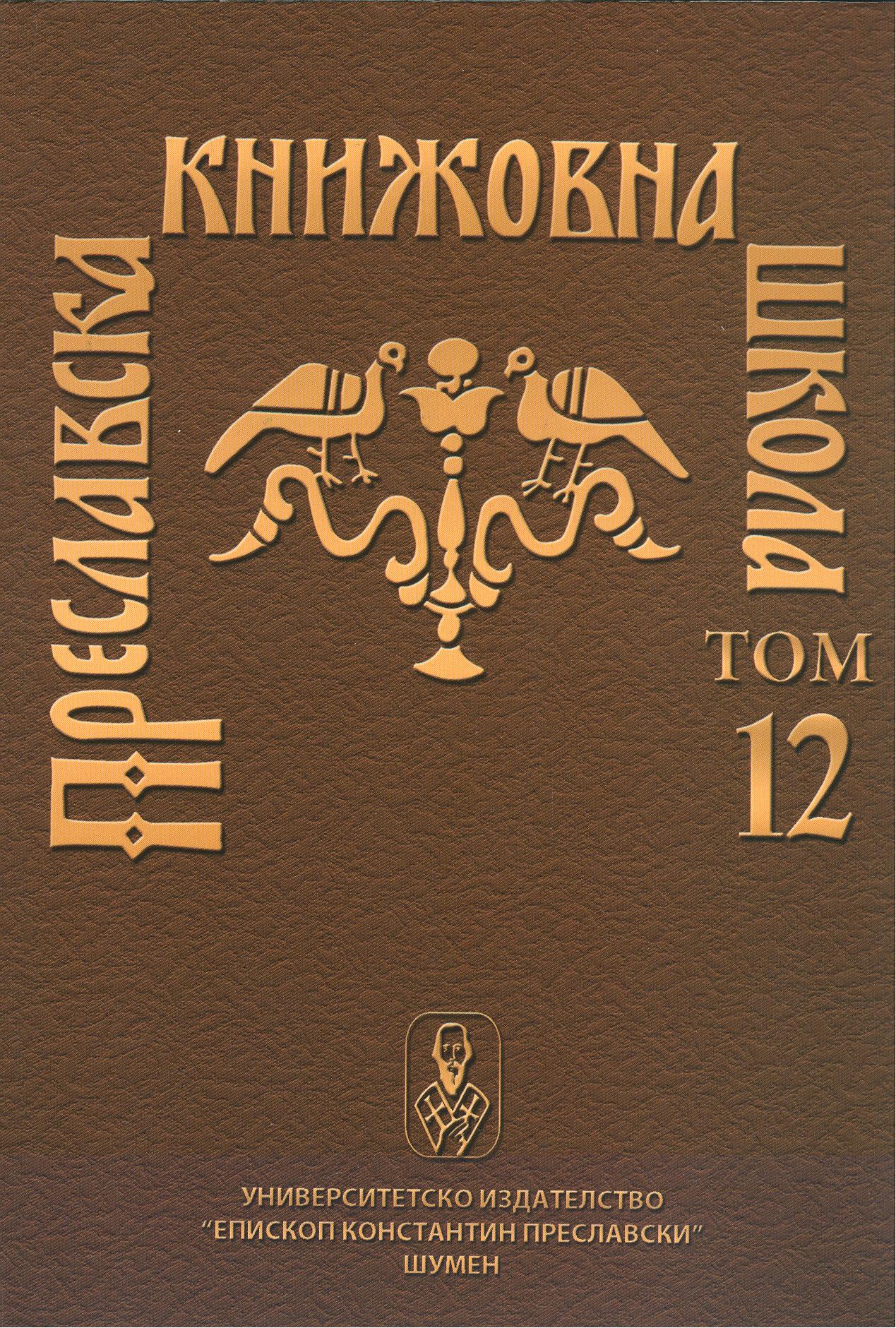
This article is devoted to analysis of the text of John's Gospel which is present in the Croatian Glagolitic Missals and Breviaries created before the 15th century. Research has shown that these liturgical books contain one of the early versions of Old Slavonic translation of the Gospel, which in some Croatian sources was again fixed after Latin originals or subjected to linguistic Croatization. The Gospel text of the Croatian Breviaries and Missals which has not been subjected to a secondary correction often coincides with the Preslav edition of the Gospel. This is the result of a comparison between these Glagolitic sources and a critical edition of the Church Slavonic Gospel of John, prepared by a team of researchers led by A. Alexeev. Cases of coincidence between the Croatian texts and the more recent Cyrillic editions are very rare and not entirely convincing which excludes the possibility of later changes in the Glagolitic sources after Cyrillic copies. That Preslav edition of John's Gospel has been used in the preparation of Croatian liturgical books where it later developed independently within the framework of its own textological tradition.
More...
Use of an ethnolect/ a minor language - not only in public discourse but also in literature (and literary translation) can be considered as a political act; it also plays a significant role in creating, reinforcing and enhancing regional communities. The paper focuses on main features of regional literatures in contemporary Poland, especially on those written in ethnolects and/or regional languages (e.g. Kashubian, Upper Silesian, Vilamovian/Wilamowicean, Prussian). The Author also discusses the most important issues regarding writing in ethnolects: low status of etnolects/dialects in comparison to national/literary languages, fluent identity, multilingualism, status of a regional culture.
More...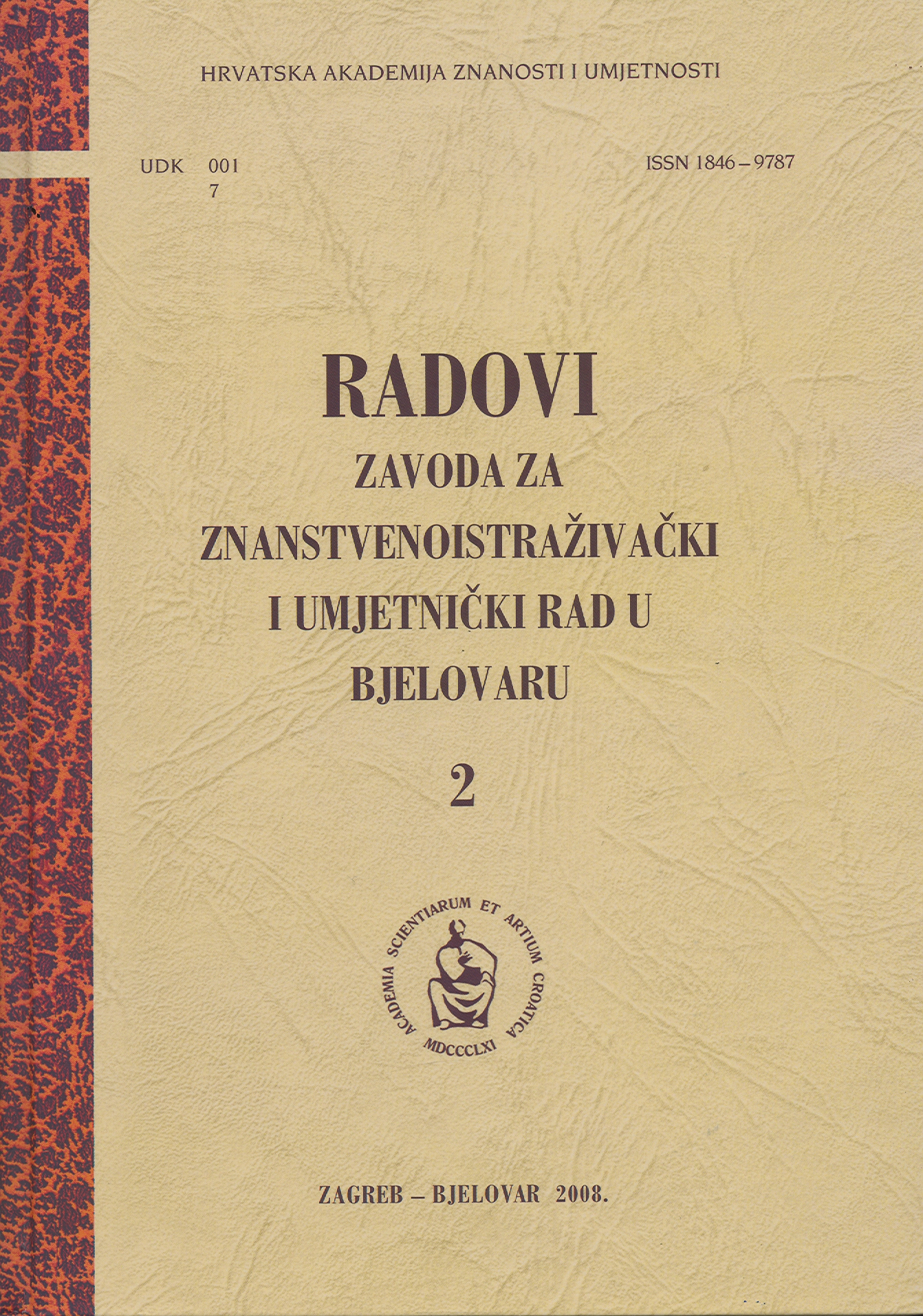
In the course of the 19th century, the Czechs were intensely immigrating to the rural areas of the today’s Bjelovar-Bilogora County. Until the time of the First World War, organised cultural activity had – in those circles – been in its earliest beginnings. The first association of the Czechs was Češka beseda, which was formed in 1907 in Donji Daruvar. The cultural life of the Czechs in the area of the Bjelovar-Bilogora County became livelier between the two world wars; in that period, wherever they settled, the Czechs formed their national associations. The Czechoslovak institutions had financially supported such associations; the intention was to put an end to the assimilation process of the Czechs and the Slovaks in rural milieus. This was made possible thanks to the highest organisation – the Czechoslovak Union – formed in 1921, which took care of the cultural life of the Czechs and the Slovaks in the territory of the Kingdom of the Serbs, Croats and Slovenes. The Union was led mostly by Czech nationals, who were representatives of the Czechoslovak institutions and hence not adequately familiar with the life of the Czechs in rural milieus. In the Daruvar area, the beseda of Daruvar played the vital role in the forming of the Czech associations. The cultural life of the Czechs in the area of the today’s County had experienced many vagaries. In the period of the Independent State of Croatia, the cultural life was at a standstill, Czech associations and schools were not operating; nevertheless, this situation changed towards the end of the war. After the war, the rights of the national minorities were officially recognised from the level of the state. However, a problem occurred – a lack of domestic professional staff, since many Czech teachers had returned to their homeland before the war, and the rest remigrated together with more than five thousand Czechs from the territory of the then state. This situation became even worse after the Informbureau resolution of 1948, whereby any kind of assistance from Czechoslovakia regarding culture was withdrawn. In addition to its involvement concerning education, the Czechoslovak Union (today the Czech Union) has furthermore been encouraging the operation of the beseda associations, which foster various cultural activities: music, singing, folklore, theatre, etc. The Czech Union moreover supports the publishing activity, takes care of preserving the Czech historical sources, and helps to ensure optimal working conditions in all social environments in which beseda associations are active. Thanks to the state-level assistance from the Republic of Croatia and the Czech Republic, the cultural activities of the Czechs in Croatia have indeed flourished; thereby, the bilateral relations between the two sovereign states are continuously developed and enhanced.
More...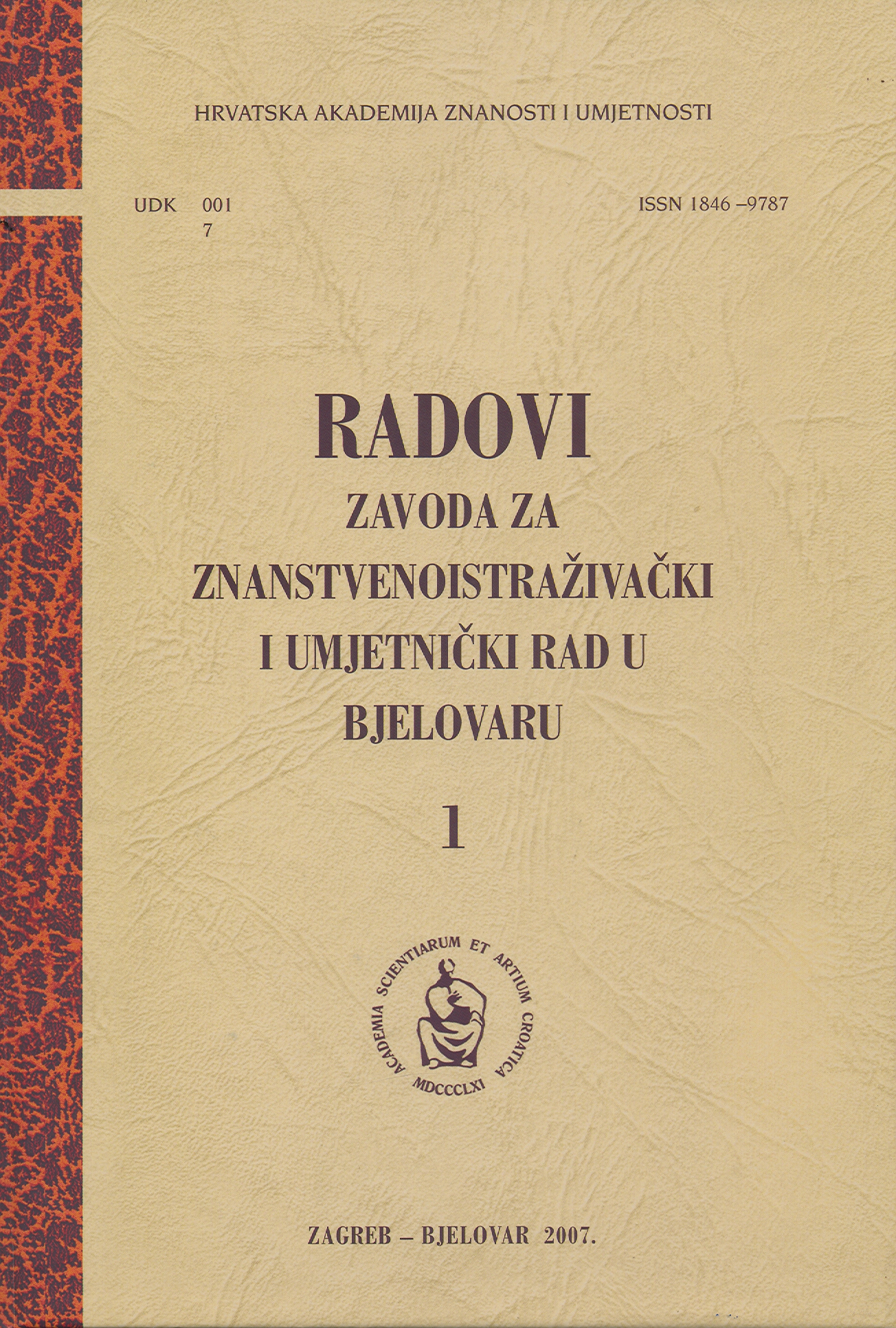
Czechs are one of the ethnic groups that have been present in the life of the town since its foundation. Czech soldiers, officials, craftsmen, and musicians moved into Bjelovar. The strongest trace Czechs left was in the music sphere, starting from father Hubert Diviš, a creator and organizer of the musical life in Bjelovar, Josef Mazánek, a conductor of the oldest singing society Dvojnice to Josef Bis and Emil Černy, two musicians whose compositions weren’t explored so their entire work cannot be entirely valued. Dr. Josip Vrana, one of the distinguished Slavists, tried to maintain and to promote the Czech language. Today’s presence of Czechs in the cultural life of Bjelovar is being observed mostly through the Czech culturalartistic society Česká obec Bjelovar, established in the year 1920.
More...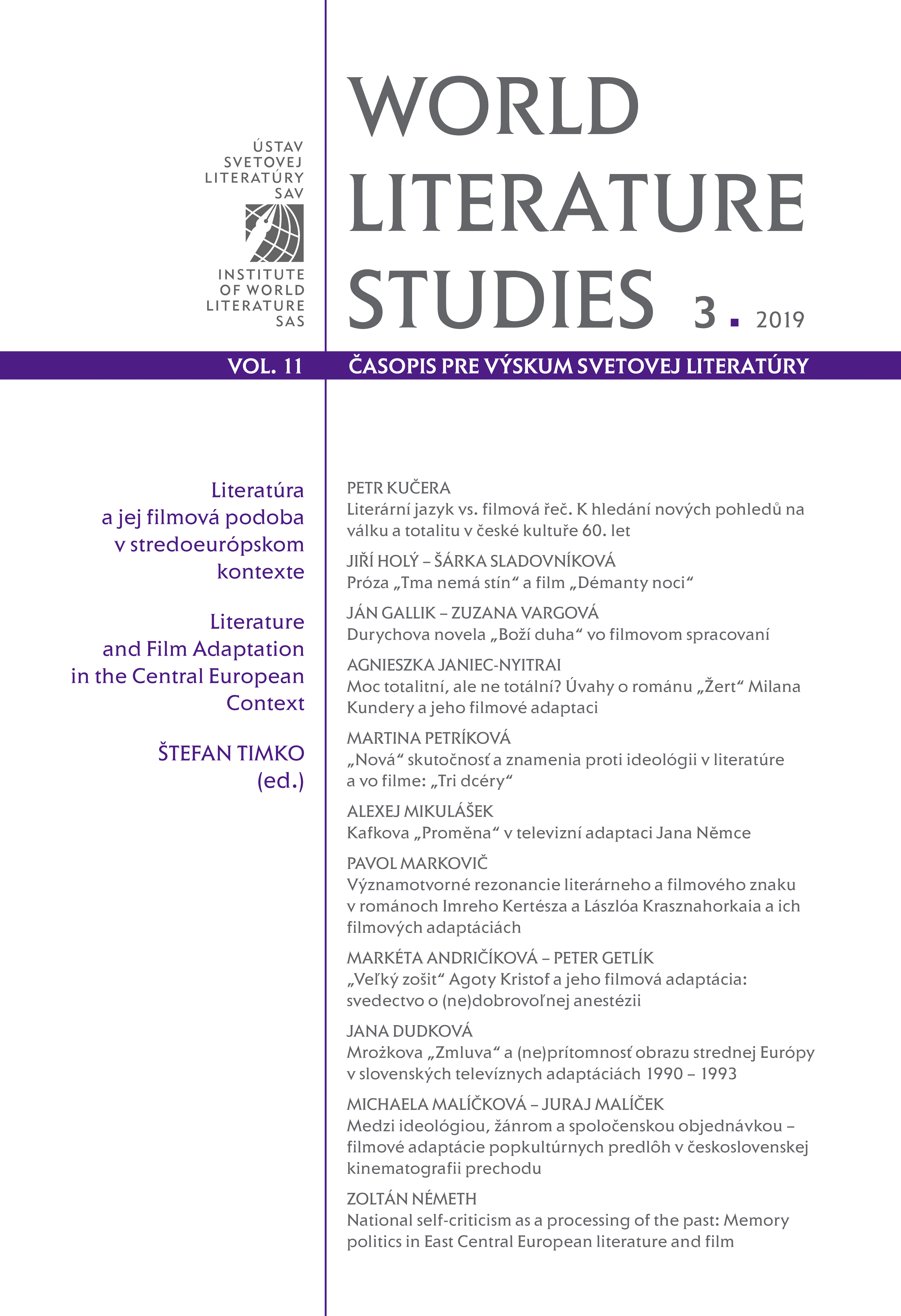

The article deals with several versions of the short story “Darkness Casts no Shadow” byArnošt Lustig and the film adaptation of this work, Diamonds of the Night, directed by JanNěmec. Lustig has gradually expanded his story in new versions. The author, who lived in the1970s and 1980s in the U.S., obviously rewrote his text with regard to American readers. JanNěmec’ s film adaptation, which premiered in 1964, is an experimental film that re-evaluatescinematic conventions. On the one hand, it uses surreal elements, on the other hand authenticdevices.
More...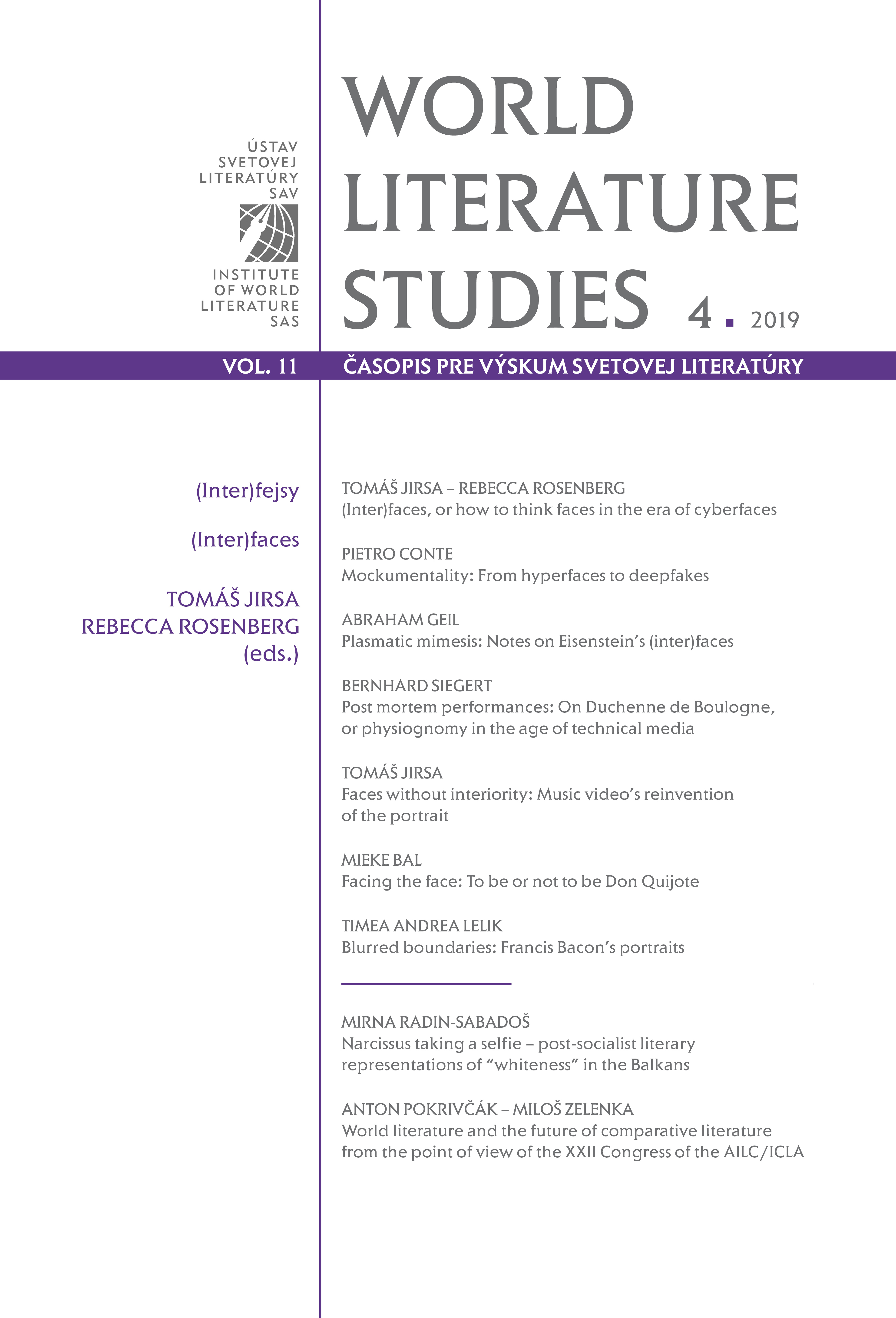
The study is an analysis of the XXII Congress of the AILC/ICLA Literature of the World and the Future of Comparative Literature which took place between July 29 and August 2, 2019 in Macau. As its name indicates, the lectures and workshops emphasised the concept of “literature of the world”, which is considered less elitist than the traditional, and more homogenous, concept of “world literature”. The idea that the (world) literature cannot be approached only from one cultural or theoretical point of view also permeated the joint Czecho-Slovak issue of the journal World Literature Studies entitled “The Image of Remote Countries in the Literatures of Central and Eastern Europe” published on the occasion of the Congress. Using various literary materials, the issue attempted to discuss modern methodological approaches to intercultural problems from the imagological intercontinental perspective.
More...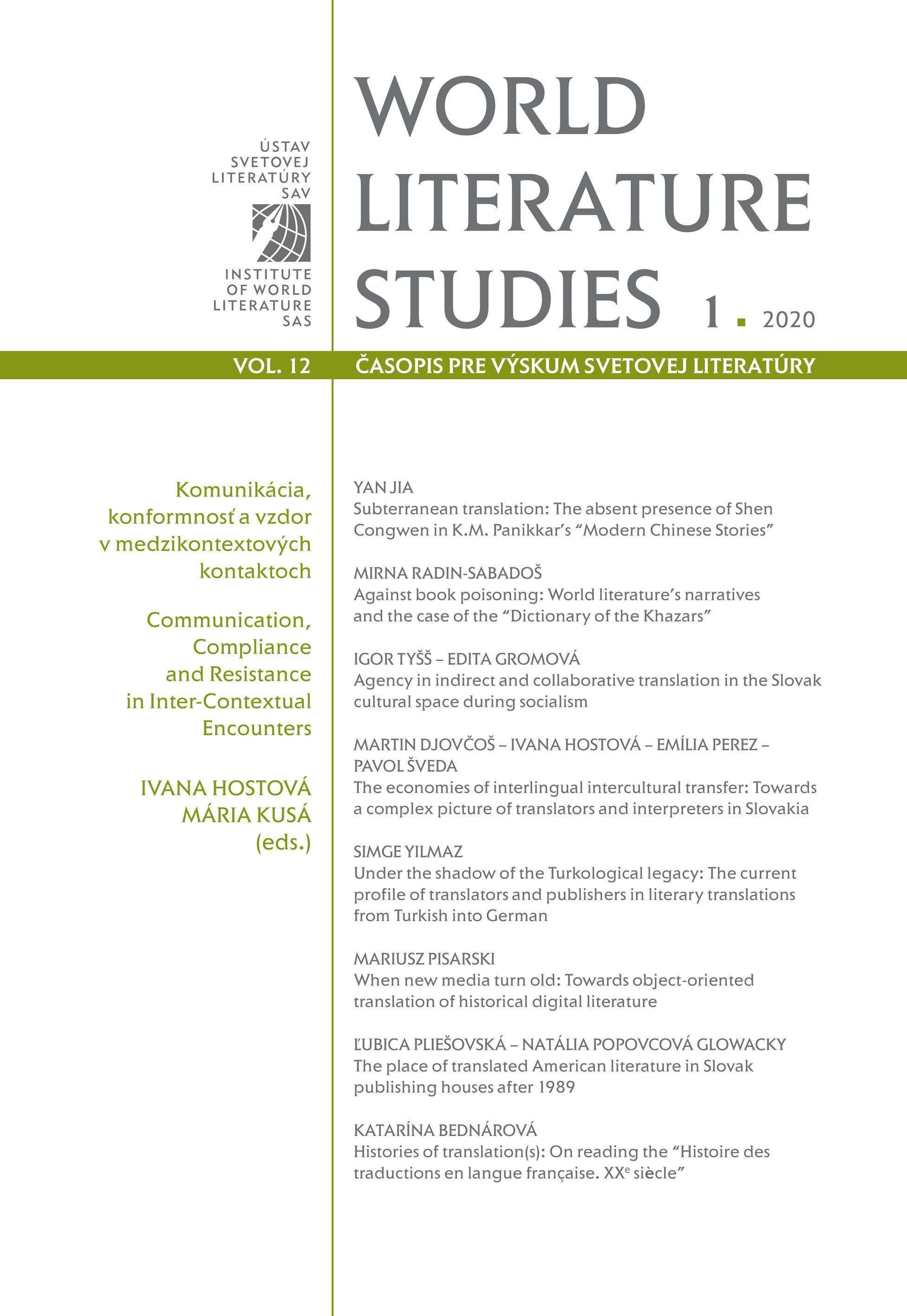
Libuša Vajdová: Antoine Chalvin – Jean-Léon Muller – Katre Talviste – Marie Vrinat-Nikolov (eds): Histoire de la traduction littéraire en Europe médiane. Des origines à 1989 [The History of LiteraryTranslation in Central Europe. From Its Origins to 1989]; Anton Eliáš: Ivana Kupková – Zbyněk Fišer et al.: Jiří Levý: zakladatel československé translatologie [Jiří Levý: The Founder of Czechoslovak Translation Studies]; Matej Laš: Vladimír Biloveský – Ivan Šuša: Banskobystrické myslenie o preklade a tlmočení [Thinkingon Translation and Interpreting in Banská Bystrica]; Edita Gromová: Andrej Zahorák: Intercultural Aspect in Translation and Reception of Precedent Phenomena; Jakub Kapičiak: Gerald Janecek (ed.): Staging the Image: Dmitry Prigov as Artist and Writer
More...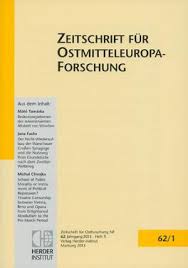
Review of: Umbrüche innerhalb der Schriftlichkeit in profanen und sakralen Übersetzungstexten des Deutschen, Tschechischen und Polnischen vom 15. bis zum 17. Jahrhundert. Hrsg. von Sebastian Seyferth . (westostpassagen – Slawistische Forschungen und Texte, Bd. 19.) Olms. Hildesheim 2014. 186 S., 7 Ill. ISBN 978-3-487-15137-3. (€ 34,80.). Reviewed by Thomas Daiber.
More...
The Czech writer, essayist and translator Jan Čep (1902–1974), whose work displays his Catholic orientation, is considered to be one of the most original and thoughtful Czech Christian thinkers. This interpretation of selected works by Čep aims to build on existing research, to deepen the views of his artistic language and imagery, and to analyse the means of expression created by the author’ s philosophical-reflexive and meditative lyrism, often alluding to a contemplative position. In a special way, the metaphysical image of the dual home (first homeas a temporary dwelling for earthly existence, which is the image and parable of the second – permanent – home in heaven) emerges from the poetics constituted in this way (based on both artistic and spiritual vision of the world), which thematically reads from Čep’ s transcendent experience. In this analysis, the phenomenological view appears to be an adequate methodological approach alongside literary interpretation.
More...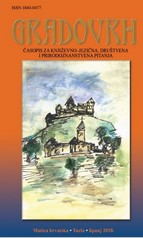
Dieser Beitrag besteht aus einem theoretischen Teil, in dem der bisherige Forschungsstand auf dem Gebiet der NPs (Nominalphrasen) und der Abfolge der NPs vorgestellt wird, der als Grundlage für eine korpusbasierte Analyse dienen wird. Dem Hauptziel widmen wir uns im zweiten Teil des Beitrags, der korpusgestützten empirischen Untersuchung. Das Ziel ist es, zu überprüfen, od die zahlreichen theoretischen Ansätze, die Abfolge der NPs betreffend, einer solchen empirischen Untersuchung standhalten. Es sei an dieser Stelle vermerkt, dass während der Analyse nicht auf den ganzen Satz Bezug genommen wird, sondern nur auf den Teil des Satzes, in dem zwei NPs aufeinander treffen können. Das beudeutet, es wird der Teil des Satzes zwischen der linken und der rechten Klammer analysiert (z.B. Franz hat seinem Bruder die Wahrheit gesagt.; [...] dass Franz seinem Bruder die Wahrheit gesagt hat.), wobei die NPs nicht unmittelbar aufeinander folgen müssen.
More...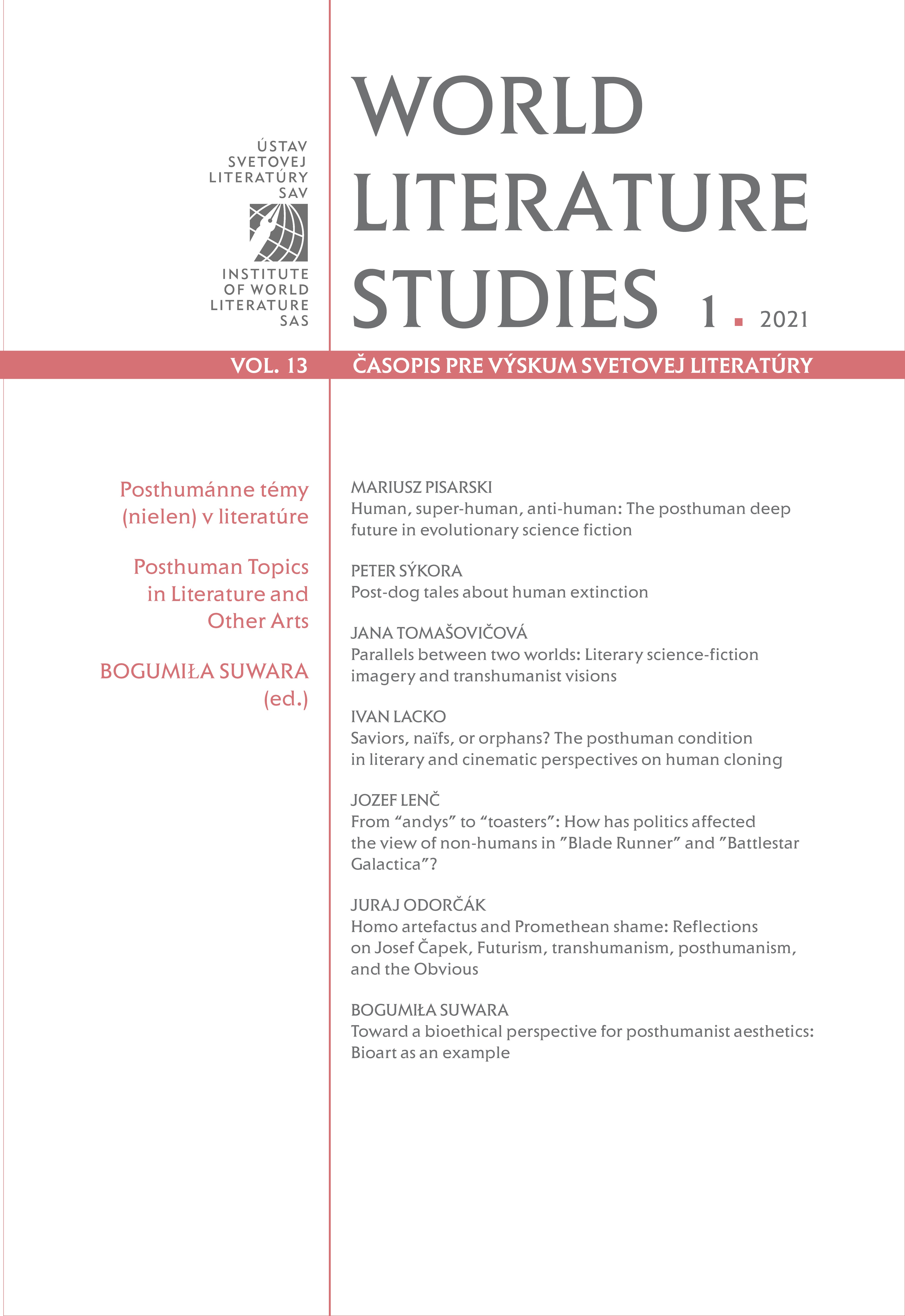
This paper is focused on an analysis of Josef Čapek ’s notion of technology and his scrutiny of the conflicting nature of the avant-garde movement of Futurism in relation to the contemporary assumptions of the processual philosophies of transhumanism and posthumanism. The analysis is reconstructed in the narrative setting of the technological and methodological hybridization of the categories of the human and posthuman (Homo artefactus) and is inspired by Josef Čapek’s approach to a specific philosophical question: Why would anyone want to create a posthuman, a “robot Picasso”? It is argued that Josef Čapek projected that some of the motivational assumptions about the creation of posthumans would be built upon the inconsistent stigmatization of the human by humans that envy the hypothetical superiority of posthumans (i.e., Promethean shame).
More...
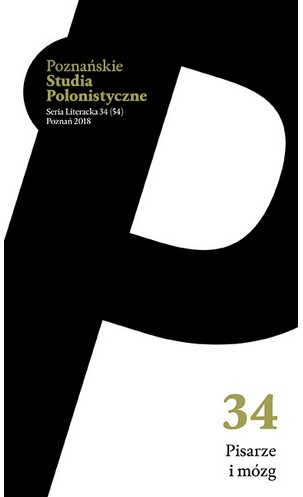
The paper explores hybrid identities of main characters in chosen contemporary authors as Kafka, Dürrenmatt, Bulgakov, Dukaj, and in particular Brown. They all contribute to the posthumanist literary genre and to better comprehension of condition posthumana as a leading utopia in the age of advanced technologies. The author argues for affinities between the human and the non-human brain, far beyond the anthropocentrism and anthropodenialism controversy.
More...
The article discusses non-Anglophone campus fiction based on contemporary Slavic academic fiction. The author maintains that for the study of Slavic campus fiction in the context of world literature, the methodology of area studies and comparative literature is productive since it presents necessary tools for interdisciplinary research. This idea is illustrated by campus fiction written in the countries of Central Europe. The article discussed generic peculiarities of Slavic campus fiction, which primarily is constituted by the socio-cultural context of the area’s university history and the themes, therefore, dealt with by the novels. As the themes common for Czech, Slovak, Polish, and Ukrainian campus fiction the author specifies the problem of identity, cultural memory, and the university’s contemporary challenges. Among the specific features identified in these national literatures, campus metafiction by Slovak and Polish writers is mentioned. The author concludes that Slavic campus fiction offers a unique lens on multilingualism and hybrid identities, shaped by Europe’s intricate history and opens up new possibilities for further research.
More...
This article attempts to identify works of fiction in recent Czech literature that can be considered campus novels, more or less corresponding to the genre pattern that has taken shape in Anglophone literature since the middle of the last century. Aware that, in the Czech context, it is a genre that is relatively unproductive and marginal, the article introduces Czech fiction with university themes, considering the contribution of the comic and satirical modality as one of the defining features of the campus novel and pointing out possible inspirational influences, genetic and typological connections, or possible differences from the Anglophone tradition. It also attempts to highlight the thematic background of Czech campus novels and point out their possible thematic specificity.
More...